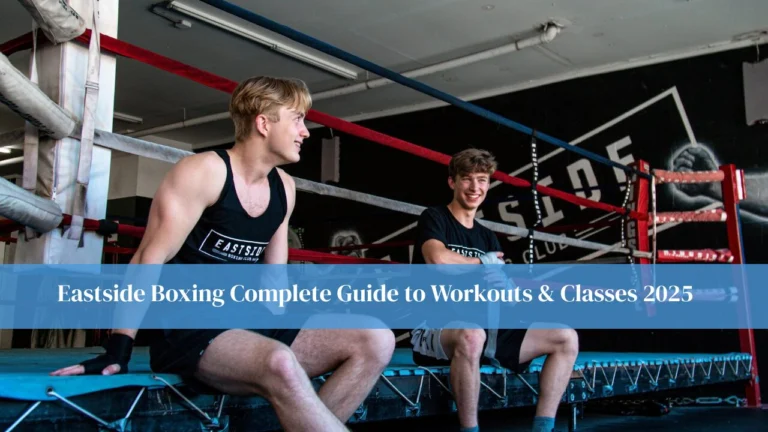Boxing is a sport of power, speed, and explosive movement. While traditional training focuses on technique, endurance, and strength, one powerful method often underutilized by fighters is boxing plyometrics. Incorporating plyometric exercises into a boxing regimen can significantly elevate a fighter’s performance by improving speed, reaction time, agility, and knockout power.
In this guide, we’ll explore what boxing plyometrics are, how they work, the benefits they offer, sample exercises, and how to safely integrate them into your training routine.
What Are Plyometrics?
Plyometrics, sometimes referred to as “jump training,” are high-intensity, explosive exercises involving a rapid stretch of the muscles followed by a quick contraction. This process, known as the stretch-shortening cycle, mirrors the explosive nature of boxing movements such as punching, slipping, and quick footwork.
Although originally designed for track and field athletes, plyometrics have become a valuable tool for boxers. They help fighters generate force rapidly, which is essential for delivering knockout punches and executing swift evasive maneuvers.
Why Are Plyometrics Important for Boxing?
Boxing is not solely about strength and endurance. The ability to generate explosive force in a fraction of a second can determine whether a punch lands or misses. Plyometric training develops this skill by improving a boxer’s punching power, speed, agility, reaction time, and balance. It also enhances footwork explosiveness, allowing fighters to move efficiently around the ring.
According to Boxing Science, a recognized performance platform for boxers, plyometric training increases the rate of force development (RFD). This is a crucial factor in both striking and movement efficiency, helping boxers perform at their peak.
Benefits of Boxing Plyometrics
One of the most significant benefits of plyometric training in boxing is enhanced punching power. This is because plyometrics target fast-twitch muscle fibers responsible for explosive force. Movements like clap push-ups and medicine ball slams replicate the mechanics of a punch and strengthen the neurological pathways used for fast, powerful strikes.
Another major advantage is improved footwork and agility. Exercises such as box jumps and lateral bounding condition the legs to respond faster, allowing fighters to step in and out of range with precision. Faster reaction times also come naturally as the nervous system adapts to respond quickly to sudden changes, which is crucial in a sport where milliseconds matter.
Plyometrics also increase muscular efficiency by improving neuromuscular coordination. This ensures that every movement is more effective, reducing wasted energy. Training in high-pressure situations through plyometric drills also enhances composure and explosiveness during actual fights. Furthermore, these exercises strengthen tendons and ligaments, which lowers the risk of common boxing injuries such as strains and sprains.
How to Integrate Plyometrics into Boxing Training
Before adding plyometrics to your routine, it is essential to recognize their high-intensity nature. Without proper planning, overtraining or injury can occur. Always begin with a thorough warm-up, including dynamic stretches and mobility drills. Start with a low training volume, such as two sessions a week, and focus on form rather than excessive repetitions.
Adequate rest between sets typically 60 to 120 seconds is crucial to ensure peak performance and prevent fatigue. Avoid scheduling plyometric work immediately after exhausting training sessions or sparring. If preparing for a competition, use periodization to structure training phases. Early weeks should focus on foundational strength and low-impact drills, followed by intermediate and advanced plyometric exercises as the event approaches.
Top Plyometric Exercises for Boxers
For the upper body, clap push-ups are excellent for building explosive power while mimicking the mechanics of a punch. Medicine ball chest passes strengthen the chest, triceps, and core, while also improving hand speed. Overhead medicine ball slams generate total-body explosiveness, engaging the shoulders, back, core, and legs.
Lower body plyometrics include box jumps, which target the quads, glutes, and calves while training vertical explosiveness for dynamic footwork. Depth jumps are highly effective for developing reactive lower-body strength, while skater bounds mimic lateral ring movements, boosting balance and stability.
Core-focused plyometrics are equally important. Russian twists with a medicine ball develop rotational power, essential for effective punching. Plyo plank jacks combine core strength with cardiovascular conditioning, and rotational wall throws train the obliques and rotational torque used in hooks and uppercuts.
Real-World Example: How Plyometrics Helped a Pro Boxer
At Le Cercle Boxing in Paris, plyometric training is a key part of their regimen. One notable case involved a lightweight amateur fighter who, after eight weeks of plyometric-focused strength training, increased his punching power by 15 percent as measured by a force plate. His lateral movement and foot speed also improved, contributing to his victory in a regional title match.
This example highlights how structured plyometric work can directly impact competitive performance, translating training gains into real fight success.
Supplementary Training Tips
Combining plyometrics with resistance training produces even greater improvements in power output. Monitoring progress through tools like force plates or video analysis helps track measurable gains. The key is consistency; irregular plyometric work will not deliver the same results as a structured, progressive approach.
It’s equally important to avoid common mistakes. Beginners often skip building foundational strength, which can lead to injuries. Maintaining proper form is vital, as is keeping training volume reasonable. Adequate recovery time is non-negotiable, as plyometric work places intense demands on the body. Finally, sticking to proven exercises before attempting advanced variations ensures better results and safety.
FAQs
What are the best plyometric exercises for punching power?
Clap push-ups, medicine ball throws, and overhead slams are particularly effective.
Can beginners do plyometrics?
Beginners should focus on building strength and mobility first before incorporating plyometric drills.
How often should I do plyometrics in my boxing routine?
2–3 times per week is ideal for most athletes, with adequate rest between sessions.
Are plyometrics risky for boxers?
If performed correctly and progressively, they are safe and highly beneficial. Always prioritize form and recovery.
Should I do plyometrics before or after boxing training?
Ideally, do plyos on a separate day or before skill training when you’re fresh.
What equipment do I need for boxing plyometrics?
At minimum, a sturdy box, medicine ball, and open space. Resistance bands and weighted vests can be added for progression.
Conclusion
Boxing plyometrics can transform your speed, power, and performance in the ring. By training your body to move explosively, you develop the kind of knockout power and agility that separates good fighters from great ones. Just remember: start slow, focus on form, and build progressively.
Plyometrics are not a replacement for skill or strategy, but they are a performance enhancer. Use them wisely, and you’ll see improvements in reaction time, punching power, and overall athleticism.
Visit boxing essential to get more information.




